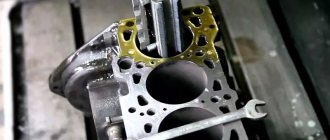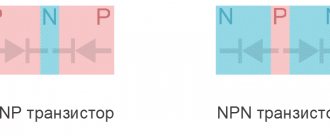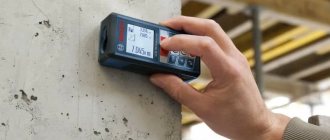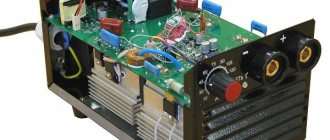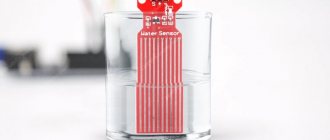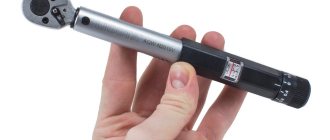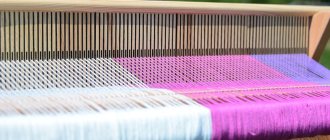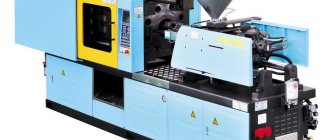Everything you need to know about using a hydrometer
Alcohol meters come in various models, but most often this device is a cone sealed on both sides, the lower wide part of which contains a weighting agent, and the narrow upper part contains a scale with markings. The main varieties include the following:
- Laboratory. This device is used by professionals, setting the level of liquid strength with fairly high accuracy;
- A digital, also known as electronic, hydrometer quickly and accurately takes the necessary readings, but is expensive;
- If you need to find out about the strength of a liquid, where there are other components in addition to alcohol and water, an optical device is used. This device will show results in a range of up to 40 degrees and provide information about the amount of sugar in the drink. It is usually used by producers of wine and various liqueurs;
- Ryumochny. As the name suggests, this compact specimen is convenient to use for checking liquids for alcohol content in small containers. However, its accuracy leaves much to be desired;
- A wine alcohol meter is used exclusively to determine the sugar content of alcohol (up to 25%) and alcohol content (up to 12%).
Using an alcohol meter correctly
For maximum measurement accuracy, there are instructions on how to use an alcohol meter. Compliance with these points is mandatory:
- If you have just diluted alcohol with water, then you need to wait until this chemical reaction is completed, during which the temperature of the solution rises. This usually takes no more than 10 minutes;
- Before immersing the device in liquid, you need to make sure that it is absolutely clean and dry. Wipe it gently with a soft cloth;
- It is better if the temperature of the alcohol-containing liquid is 20C°;
- For the most comfortable use of the device, it is better to pour the test liquid into a narrow and oblong container;
- Immerse the hydrometer slowly and strictly in the middle, without touching the edge of the container and its walls;
When its oscillations stop, you can evaluate the indicators on a scale.
Homemade alcohol meter
If you accidentally break this fragile glass device, and you need to measure the alcohol content in the liquid right now, then you can try making an alcohol meter with your own hands.
The main components of a homemade meter are a transparent plastic body from a ballpoint pen and a plastic drop bottle
It is important that the body (length - 14 cm) fits tightly into the neck
We cut off the edge of the body a little, but on the other side we leave the part with the cap. Screw the bottom part into the bottle (to make the connection tighter, the bottle can be preheated in hot water).
As soon as the device drops one and a half to two centimeters from the upper border of the bubble, you need to pour glue inside with a pipette (this is necessary to secure the weighting agent) and screw on the cap.
A notch made according to the water level will be considered 0.
Then, when you dip it in a container of vodka purchased from an official store (40 degrees), you will notice that it sinks deeper. Make a new mark and mark from 0 to 40 units.
Once you learn how to make an alcohol meter at home, you can easily measure the amount of alcohol. In addition, for more convenient use, you can arrange the notches in increments of 5 units.
Check for accuracy
If you are going to test an alcoholic drink for alcohol content, then keep in mind that the accuracy of the indicators may be affected by impurities included in the composition. The result of testing liqueurs, fruit liqueurs and other products will not be objective, since during production, factory devices are tested only in solutions of alcohol in water.
There is also an error due to temperature. If you were unable to meet the required indicator for the liquid being assessed at 20C°, then the indicators will not correspond to reality. The strength of a cold drink will be lower, and that of a warmer drink will be higher. Interestingly, these data are also affected by atmospheric pressure.
Measurement conditions
The apparent simplicity of the alcohol meter should not be underestimated - if the rules of use specified in the instructions are not followed, the risk of obtaining an unreliable result is very high.
To minimize the risk of such oversights, it is necessary to take into account all the nuances:
- The scale range of the instrument used must be appropriate to the situation. In other words, it makes no sense to use optical alcohol meters or wine meters to measure the alcohol content in moonshine. For this, household or laboratory devices with a scale of 0-100% are used;
- Most alcohol meters are fragile and easily subject to mechanical stress, and if any defects appear, the device loses accuracy and is considered damaged. Therefore, it is necessary to store the meter in its original packaging, completely eliminating the risk of damage;
- Failure to comply with the temperature regime can cause an error in measurements of up to 7%. As a rule, instruments are calibrated to work with solutions at a temperature of 20 °C ± 0.5 °C. At elevated temperatures the results will be overestimated, at lower temperatures they will be underestimated. In addition, the density of the liquid is affected by atmospheric pressure, the recommended value of which is 760 mm Hg. Art.;
Learned something new from our article?
Not really
- the presence of third-party components (sugar, juice, tannins, fusel oils) affects the density of the solution and distorts the measurement results. Only optical and electronic alcohol meters, as well as wine meters, are designed to work with liquids containing impurities.
Electronic
What is an electronic alcohol meter? Where can I buy it? The electronic alcohol meter can continuously monitor the strength and be used as a thermometer. When making homemade vodka, thanks to modern developments, it is possible to measure the strength not in the liquid, but by controlling the temperature of the alcohol vapor. The consumer, while engaged in the distillation process, may not fill special containers. A digital electronic alcohol meter will determine and show the strength of the resulting composition during the process of making moonshine. These indicators will be more accurate than those of a conventional scale hydrometer.
In appearance, the device has the shape of a round or rectangular box. A sensor in the form of a probe is removed from it. The latter is immersed in liquid and measurements are taken. Where to buy an alcohol meter with a dipstick? There are stores with specialized assortments. You can also find them in regular household appliances or industrial goods stores.
How to choose a hydrometer for your own needs?
If your passion for moonshine brewing is only at the beginning level, then you can buy the most ordinary household or even a glass alcohol meter. Almost every distiller started with exactly this.
Later, with experience and the creation of more and more elite alcohol, as a rule, they switch to ASP-3. However, you should be somewhat skeptical about Chinese-made devices. Among them there are some that are not entirely accurate. Besides, they are too fragile. Sometimes they break when they are simply pulled out of the cardboard tube.
Electronic (digital) is just a moonshiner’s dream. And not only because of the accuracy of the readings, but also because of the ease of use. Thin long probe, digital display. There is no need to recalculate anything; the alcohol meter does this on its own, taking into account the temperature of the drink. And it shows alcohol content with minimal error.
Cooler
The golden rule for the full development of the flavor bouquet of wine during tasting is to slightly cool it. Naturally, this function is often performed by refrigerators/freezers. However, special coolers have been developed that are easy and quick to use. For example, cooling jackets. This wine cooler consists of interconnected cases with cold batteries. Thus, in any situation, you can cool the wine quickly enough, and also maintain the desired temperature throughout the tasting.
Recently, innovative technologies have become popular, among which the electronic cooler occupies a special place. In appearance, the device looks like an ice bucket, but its size is ideal for a wine bottle. This wine cooler is energy-efficient and absolutely simple, convenient for home use. https://www.youtube.com/embed/-XrntzUXlUg
Analogues of this product
The group (Teplopribory, Prompribor, Teplokontrol, etc.) is instruments and automation for measuring, monitoring and regulating the parameters of technological processes (flow metering, heat control, heat metering, control of pressure, level, properties and concentration, etc.).
https://www.youtube.com/watch?v=ytpressen-GB
Geography of Teplopribor Group of Companies: Moscow, Ryazan, Chelyabinsk, Kazan, Yekaterinburg, St. Petersburg, Novosibirsk, Nizhny Novgorod, Samara, Rostov-on-Don, Ufa, Krasnoyarsk, Perm, Voronezh, Belgorod, Volgograd, Krasnodar, Saratov, Tyumen , Tomsk, Omsk, Irkutsk, Ulan-Ude, Saransk, Cheboksary, Yaroslavl and other cities of the Russian Federation, we also work with Belarus, Ukraine and Kazakhstan.
Types of hydrometers
These devices have another name - an alcohol hydrometer.
There are several different varieties on sale today. Each specific type has its own nuances in operation, which must be taken into account when purchasing. Moreover, all types can be used both at home and directly in production.
What different types of alcohol meters consist of and how to check alcohol strength with their help, we will consider further.
Laboratory
This type of alcohol meter is considered the most accurate; the data obtained with its help is 99.9% accurate. It is used when carrying out special laboratory studies of various types.
Each scale of its division is equal to one degree.
The great advantage of this device is its ease of use, as well as the possibility of using it at home. Professional moonshiners in most cases prefer it.
Domestic
It has been specially designed for home use.
The scale of its divisions is also equal to one degree. There are universal household hydrometers, which are suitable for determining the strength of any drink, and individual ones, with the help of which you can determine the percentage of alcohol in only one drink.
Digital or electronic
A digital device for measuring degrees is characterized by high accuracy in measuring the alcohol content in liquid vapor.
- The results obtained during the measurement are displayed on a special mini-monitor.
- With its help you can determine not only the alcohol concentration, but also the temperature of the liquid.
Such devices are considered the most accurate, modern and easy to use. At the same time, they are also the most expensive.
Optic
Using this device you can determine the strength of alcoholic beverages up to 40 degrees.
The great advantage of this device is that it can be used to determine the strength of a variety of multi-component alcohol, such as liqueurs, wines, liqueurs and vermouths.
Simple and reliable to use.
Ryumochny
This device is specifically designed to measure the strength of alcohol already poured into a glass. It is compact in size, easy and quick to use. It is distinguished by high accuracy of the obtained measurement result.
Wine meter
As is already clear from the name of this device, it was specially created to determine the strength of various wines.
Its use allows you to determine not only the strength of these alcoholic drinks within 20 degrees, but also allows you to find out the exact concentration of sugar in them.
All these types of devices are further divided into two large groups, depending on the material they are made of:
- glass devices are light in weight and inexpensive, but require particularly careful use;
- metal alcohol meters are reliable, durable and have a higher price.
People who use hydrometers of various types say that when used correctly, there is no significant difference between these two types.
What are they?
Hydrometer classifications:
- Laboratory - designed to measure the volume of alcohol in mixtures from which various household products are made. Such a device is quite accurate, so it is usually used for professional determination of the strength of a solution. It works with very high precision. This type of hydrometer has three varieties - determining the percentage of alcohol from 0% to 40%, from 40% to 70% and from 70% to 100%.
- Household - used to determine the percentage of alcohol in liquids at home. It is a glass vessel with mercury in the lower part. At the top there is a scale that immediately shows the percentage of alcohol content in the liquid. When using it, certain conditions must be observed. Firstly, the solution temperature should be 20 degrees! Secondly, besides water, there should be no impurities in the liquid! Thirdly, the hydrometer should not touch the walls of the container in which the measurement is being made!
- Electronic (digital) is good because its indicators are much more accurate than a regular hydrometer with a scale. However, the cost of this option will be slightly more expensive. Electronic is characterized by stable operation and fast sensor response.
- Optical - used to determine the concentration of ethyl alcohol in a water-containing mixture or multicomponent solution. And also to account for alcohol during its production. The amount of alcohol in this device is calculated according to a specific algorithm embedded in the microprocessor program. The temperature range of measured liquids in an optical alcoholometer is wider (than in a household one), it ranges from plus 5 and inclusive to plus 40 degrees.
- Universal is an unpretentious and convenient device for determining the strength of any liquid containing alcohol. The scale of such a hydrometer has a scale from 0 to 96 degrees.
- A glass hydrometer is a compact hydrometer for determining strength in a small vessel, for example, a glass. The scale available in such a device (0-80 g) allows you to determine the alcohol content in the liquid with maximum accuracy.
- A wine meter is a type of alcoholometer that is used to determine the strength of wines, as well as the amount of sugar in the drink. This device is used in everyday life and is an invariable companion of any winemaker.
How to properly store a hydrometer?
In most cases, in the homes of ordinary housewives or novice winemakers, alcohol meters are stored among other household utensils and often, when the device is needed, it is difficult to find it in a huge number of other items and accessories. Considering that a hydrometer is a precision measuring instrument, storing it in this way is strictly prohibited.
Experienced moonshiners and winemakers understand that during improper storage, the settings and accuracy of the alcohol meter can be disrupted, and this will lead to problems in the further production of alcohol. Therefore, such craftsmen store hydrometers exclusively in factory cases and packaging, in places where the device will not be subject to shaking or other mechanical stress that could compromise its accuracy or the integrity of the case. Most alcohol meters are made of glass and are fragile, so they can be easily broken. And the appearance of scratches, cracks or chips on the surface of the device body increases the likelihood that it has ceased to show accurate measurement results and needs to be replaced, since it cannot be repaired or restored.
Design and principle of operation
Thus, we have found out which brands of such devices are most popular these days and where to buy an alcohol meter (in Moscow - in a pharmacy, in a small town - easier via the Internet). Finally, let's figure out what this device actually is and what the principle of its operation is. In most cases, an alcoholometer is a narrow glass tube with the lower part filled with mercury. There is a clearly visible scale installed on top of it. In some cases, the latter may display the ratio of the mass of the solution and its volume. But most often in modern alcohol meters the scale shows the percentage of the ratio of alcohol and water. This eliminates the need for users to search for the necessary information in special tables.
The operating principle of this device is extremely simple. The density of a solution is directly proportional to its concentration. That is, the higher this indicator, the more alcohol is contained in the liquid being tested.
When using an alcoholometer, you should keep in mind that the density of solutions largely depends on their temperature. Therefore, instrument readings are correct only when the temperature of the liquid being tested is 20 degrees C.
In general, modern alcohol meters are very convenient devices that allow you to determine the composition of distilled moonshine with a high degree of accuracy. Finding a retail outlet that sells devices of this type will not be difficult. That is, the problem of where to buy an alcohol meter can be solved extremely simply in our time. This could be either a pharmacy located near your home, or a specialized online store.
How to use an alcohol meter correctly
To correctly determine the ethanol concentration in a drink, you need to know how to use an alcohol meter correctly. Glass fixtures must be stored in their original packaging to avoid being dropped or shaken. If cracks or chips are detected, the hydrometer is considered unusable.
Most alcohol meters undergo calibration or calibration at a temperature of +20⁰С (deviation - 0.5⁰С). If the temperature fluctuates, the device produces an incorrect value, and correction must be taken into account.
The operating principle of the alcohol meter is based on Archimedes' law. When the device is immersed in a liquid, it displaces a certain volume of it. This is how the density of the solution is found, which is equal to the mass of the hydrometer divided by the volume of the displaced solution. The strength is calculated by the value on the hydrometer scale.
The procedure for measuring the strength of a drink with an alcohol meter:
If the liquid being tested is stronger than the measuring range of the device, then it must be diluted with water in a ratio of 1:2 or 1:3 and remember the dilution factor. It is needed to calculate the strength of the drink. Remove the alcohol meter from its original packaging and wipe it with a clean, dry cloth. If the device is dirty and oily, it must be carefully washed and degreased with alcohol. Bring the temperature of the test solution to +20⁰С, get rid of bubbles and foam that create measurement errors. Pour the drink into a clean and dry container of narrow diameter and relatively high height so that the alcohol meter can fit completely into it. This could be a cylinder, a measuring cup, or a flask. Immerse the alcohol meter in a container with liquid with the wide part facing down.
Lower the device carefully so as not to break it. The device must be strictly in the center and not touch the walls of the container
Wait for the hydrometer to stabilize. If the device sinks, it means the solution is stronger than the measuring range. Dilute it. Record the measurement result along the lower edge of the meniscus. The resulting value must be multiplied by the dilution factor (if you diluted the solution with water). Remove the hydrometer from the container with the solution, wash it, wipe it dry and put it in the original packaging.
What to consider when handling the device
It is necessary to understand that an alcohol meter is a rather fragile thing, so you should not leave it anywhere. It can easily be broken or crushed. It is best to store the device in the packaging in which it was supplied. If cracks and chips suddenly appear on the glass, then such a device can no longer be used.
Alcohol meters can measure the strength of only water-alcohol solutions that do not contain sugar, juice, or foreign substances that appear when infused with wood chips. All additional inclusions change the density of the drink, which ultimately makes measurements inaccurate.
General instructions on how to use an alcohol meter
By default, household hydrometers are configured to work with liquids with a temperature of 20 degrees. Therefore, before starting measurements, you should use a water thermometer. If the temperature is higher or lower, the accuracy of the measurements will decrease and you will have to calculate the amount of alcohol manually using the tables supplied with the device.
Before immersing the device in liquid, you need to wipe it and make sure that the flask is free of grease and dirt, as well as wet spots
When lowering the alcohol meter into alcohol, you need to make sure that it does not come into contact with the walls of a large container, which is also important for the accuracy of measurements.
How to use a household alcohol meter
How to use an alcohol meter with a 0-96 scale
This device is suitable for determining the strength of homemade moonshine and vodka. It is intended exclusively for use in water-alcohol, “pure” mixtures. Measurement algorithm:
The resulting moonshine should be diluted with water and left for 4-8 minutes to stabilize. Wipe the device with a dry and clean cloth. You should first use a water thermometer to make sure that the temperature of the liquid is 20 degrees. But even if it is more or less, it’s not so scary. The device usually comes with tables for correcting values; you can use them. Pour the moonshine into a tall narrow vessel, or into a regular glass. We immerse the wide part of the device in the liquid so that it does not touch the walls
You cannot let go of it - a sharp blow to the bottom can damage it. We carefully unclench our fingers and monitor the behavior of the “float” - the liquid should reach a certain mark on the scale. This will be the alcohol indicator. At the end, we take out the device, be sure to wipe it dry and put it in the packaging for storage.
You can watch the video on how to use an alcohol meter:
How to use the ASP 3 alcohol meter
This device has the same principle of operation as a household one, but shows greater measurement accuracy. It is manufactured according to GOST, which already indicates the proper level of quality. This option is the most popular among those who have been making home brews for a long time. It is not much more difficult to use than a household one.
- To increase the accuracy of the readings taken, it is recommended not to measure the strength of moonshine immediately after it has been diluted with water. It is better to wait about a day - during this time all chemical reactions in the drink will complete, releasing heat, and the temperature will be as close as possible to the required value - 20 degrees.
- We carefully wipe the device dry, making sure that there are no greasy stains on the surface.
- We measure the temperature of the liquid.
- We lower the device exactly in the middle of the vessel with moonshine, making sure that it does not touch the walls and bottom.
- We wait until the alcohol meter stabilizes, he should not drown. If this happens, then you need a model with a different range.
- We look at what level the liquid is at and note the resulting value.
- After work, we wipe the device again and carefully put it in the box.
How to use a wine alcohol meter
It is not possible to measure the strength of homemade wine, beer, liqueur, or mash with a conventional hydrometer. It's not designed for that. You need another device - a vinometer, which simultaneously determines the amount of alcohol and sugar in the drink. This is an indispensable thing for artisanal winemakers, which must be in the home arsenal.
Measurement process steps:
We fill a separate container with the finished product - you can use a measuring cup or a regular one, the main thing is that it is high enough, otherwise the liquid will overflow. Place the container on the table so that it stands level. Place the device in the drink - it should not come into contact with the walls. Carefully remove your hand - the “float” should hover in the liquid. Look at the scale - to what value the liquid has reached is the strength indicator.
What is an alcohol meter
Alcohol meters are easy-to-use devices that must be in the arsenal of any person who produces various alcoholic beverages.
Everything is elementary - you immerse a measuring device containing a load of a certain mass into the liquid. The device pushes out part of the liquid, floating above the surface to the division that corresponds to its “degree” - Archimedes’ law.
During the manufacturing process, alcohol meters are calibrated in a water-alcohol mixture and are able to accurately determine the strength of alcohol ONLY if the latter consists exclusively of alcohol and water.
Not from sugar, fruit juices extracted from berries, fermented wort (there are separate wine meters for wines, we will talk about them below), but only and exclusively from alcohol and water. Any additive, even a minor one - for example, essential oils in distilled sambuca or absinthe - has an unpredictable effect on measurements, since the density of the substance increases - the device shows fewer degrees than it actually is.
DIY alcohol meter
However, if there is no opportunity or desire to buy such a device, then you can make it yourself. And we can say with confidence that homemade alcohol meters are not much inferior to factory instruments.
From a ballpoint pen
To make such a device you will need:
- a ballpoint pen case (the simplest one) no more than 14 centimeters in length;
- a plastic container for nasal drops and small shot (you can also use finely chopped steel wire or finely chopped lead for weight).
The following is done:
- The lower part of the handle is cut off by half a centimeter.
- To make it easier for the pen case to fit into the neck of the drop bottle, you need to hold it in hot water.
- The pen case is carefully screwed into the neck of the bottle.
- The workpiece is lowered into a container with warm water and a weighting agent is loaded through the upper hole until it is immersed in water one and a half to two centimeters from the neck. A mark is made on the case (it will be 0).
- Carefully bury the glue inside to fix the weighting material and screw the cap tightly.
- The alcohol meter is immersed in a container with 40-degree vodka. Mark 40.
- Use a ruler to measure the distance from 0 to 40 and divide by 40. This reading will correspond to one degree.
- Using the data obtained, a scale is formed. The alcohol meter is ready.
Alcohol meter from a fishing float
To make an alcohol meter from a fishing float you need:
- Take a float with a long pole. If necessary, attach a weight to the lower part to lower the float to the desired level.
- Place it in water at room temperature, put a mark that will be equal to zero.
- Pour 40 degrees vodka into a deep container, lower the float there and also put a mark. And, using the principle of an alcohol meter, form a scale from a ballpoint pen.
Test tube alcohol meter
To make such a device you will need:
- test tube;
- weighting agent;
- test tube stopper and wooden rod 12–15 centimeters.
The next steps are:
- It is necessary to load the weighting agent into the test tube so that it is completely immersed in the liquid, but does not sink to the bottom, but floats near the surface.
- Secure the weighting agent with glue.
- Close the test tube with a stopper and insert a wooden rod into the stopper.
- According to the manufacturing principle of the above instruments, apply a scale to the rod.
In conclusion, we can say that homemade alcohol meters are practically in no way inferior to domestically produced factory instruments. Moreover, they work properly, unlike their Chinese counterparts, which are consistently inaccurate in their readings. It’s up to you to decide which device to use.
How to use the device
We’ll talk about where to buy an alcohol meter below. Now let's figure out how to use this device. Using an alcohol meter to determine the percentage of alcohol in a solution is very simple. To do this, its mercury part is placed in the test liquid so that it does not touch the walls and bottom of the vessel. Readings for most household alcohol meters are taken from the lower edge of the meniscus (along the green arrow).
In order to determine the percentage of alcohol content in a solution as accurately as possible, it is worth taking several measurements and then calculating the arithmetic average. Actually, the study itself is most conveniently carried out by pouring the liquid into a glass or some other container of not too large volume.
When carrying out measurements, among other things, it is worth remembering that they can be considered accurate only when the test solution contains only alcohol and water. The presence of any impurities greatly affects the readings of the device. This is why alcohol meters are never used to determine the strength of wine. In this case, other devices are used.
Now about our favorite “degrees”.
In our time, this is a non-systematic, non-standard (not GOST), outdated unit and in our time it no longer means anything or means what any “clever” homemade moonshiner-Kulibin from the 19th – early 20th centuries can attribute to it.
In the 19th century, during the time of Dmitry Ivanovich, at the beginning of the 20th century, this unit corresponded to certain values. And not only massive, but also voluminous!! There were different calculation systems, if you are interested in details, look at the article from the journal “Issues of the history of natural science and technology” No. 2, 1999 “FROM THE HISTORY OF RUSSIAN SPIROMETRY”, L.B. Bondarenko.
You see, I didn’t even feel like drinking! - Well, where is it - without degrees? It's better to drink milk! Firstly, you have been confused by numerous calculations floating around the Internet: A liter of vodka with a strength of 40° contains 572 g of water and 381 g of grain ethyl alcohol. If the label of a bottle of vodka says 40% vol. (forty percent of the volume), then in a liter of such vodka (according to Father Dmitry Ivanovich Mendeleev) there are 635 g of water and only 318 g of grain ethyl alcohol, which is approximately 35°.
For 572 g of water - 381 g of alcohol - there is more alcohol here. – 40° For 635 g of water – 318 g of alcohol – this is less strong! – 40% or
35° In the first case, the vodka was 40 degrees, in the second - 40 percent. The first vodka is stronger and 40 degrees is not equivalent to 40 percent.
It makes you want to convert percentages into degrees, right? Don't count! In this passage there should be MASS fractions instead of degrees. Yes, there are volume percentages and there are mass percentages. Naturally, different results are obtained. But in the alcoholic beverage industry, mass fractions (when calculating alcohol content!) are not used. Volume percentage only! Secondly, William Pokhlebkin brought great confusion into our minds with his book about vodka (Pokhlebkin V.V. “The History of Vodka”).
Personally, I respect this man very much, but, unfortunately, he was not friendly with the exact sciences and wrote a lot of unnecessary (or rather incorrect) things, both about vodka and about Dmitry Ivanovich (see below). It is from him that this confusion with degrees, mass percentages still comes... Here you can write a lot about his mistakes, but it’s better to conclude:
We must remember: from the 70s of the 20th century to this day, designations on labels are indicated only in volume percentages, for example: 40% vol. Also, since that time, degrees have been mentioned out of inertia, but these degrees are equal to volume percentages, not mass percentages. Moreover, they often wrote back then: “forty proof vodka – 40°, that is, 40% vol.” That is, they said that it was the same thing.
Therefore, if some smart guy comes up to you and asks:
- How can we convert percentages into degrees? answer: “You are confusing, young man, degrees and mass fractions!” There are no degrees in official standards now. Everything is measured (in the liquor industry, written on labels) in percentages by volume. If you so want, you can convert the mass fractions into volume fractions, but this is only for personal self-affirmation and has nothing to do with the contents of the bottle. If you notice a designation in degrees on some bottles, then be sure that this is either left-handed/scorched vodka or illiterate (super illiterate) manufacturers who did not care about the standards. (Unfortunately, we have to admit that our time is the time of the illiterate, to say the least. This is where most of our troubles come from.)
Well, now for lovers of everything about Dmitry Ivanovich Mendeleev.
Here is what Pokhlebkin wrote:
While studying alcohol-water solutions, Mendeleev “noticed” their features and drew attention to their connection with the appearance of different qualities in different water-alcohol mixtures. It turned out that the physical, biochemical and physiological qualities of these mixtures are also very different, which prompted D.I.
Mendeleev to look for the ideal ratio of volume and weight of the parts of alcohol and water in vodka. While various volumes of water and alcohol were previously mixed, D.I. Mendeleev mixed various weight samples of water and alcohol, which was much more difficult and gave more accurate results. It turned out that the ideal alcohol content in water should be 40°, which was never obtained by mixing water and alcohol by volume, but could only be obtained by mixing exact weight ratios of alcohol and water.
That last sentence is absolute nonsense from a scientific point of view.
And, besides this, when mixing alcohol and water, everything goes smoothly on the full “section of the curve” and 40 percent or degrees do not stand out in any way on the graphs. Mendeleev in his works nowhere states that vodka should be exactly 40 degrees - no one has conducted “physical, biochemical and physiological” studies, so there is no ideal ratio!
Parrot for moonshine - a device that measures strength in real time
A hydrometer is a device that can be used to determine the alcohol content of a solution. This device is also called an alcoholometer. It is designed to determine the amount of alcohol only in a solution of alcohol and distilled water or in an aqueous solution. This device is not used to determine degrees in solutions with impurities! For example, in liqueur that contains sugar. After all, the more impurities in a liquid medium, the less accurate the hydrometer will show. This is a fairly fragile device that can break quite unexpectedly.
Therefore, you need to use it extremely carefully! It should be stored in its original packaging in a safe place. It should not be subjected to shaking or other mechanical impacts, which could cause damage to the device and inaccurate readings.
To determine the alcohol in a liquid, it is necessary to immerse the hydrometer in a narrow, tall vessel containing alcohol or an alcohol-containing liquid. When immersing the device, carefully lower it to the very bottom, otherwise, if you simply throw it into a container with liquid, it may suddenly sink to the bottom and break. The alcohol meter should be located approximately in the middle of this vessel and should not touch its walls. You should first wipe the device from greasy or dirty stains and immerse it in dry liquid.
You need to wait until the mercury growth stops and look at the scale. The readings on the hydrometer must be taken along the upper edge - the meniscus, namely, along the red arrow. The liquid being measured must have a temperature of degrees for a more accurate measurement. Any amateur winemaker in the household should have a device to determine the alcohol concentration in the finished drink.
To make it yourself, you need to prepare an ordinary ballpoint pen and a plastic bottle. For example, from under nasal drops, the base of the pen should fit tightly into the base of the bottle. Next, you should remove the rod from the handle and cut its body to approximately 0.
The top cap of the pen also needs to be unscrewed. In order for the handle to fit well into the bottle, it must be heated in hot water, and the cut part of the handle must be inserted into the neck of the bottle. Next, you need to calibrate the resulting workpiece. To do this, you need to take a vessel with water and place the future hydrometer in it so that the bubble lies on the water. Through the top hole we pour some kind of weight into it, you can use finely chopped wire or small shot.
We load until our device sinks in water by about 1. Using a pipette or other narrow device, fill the load with glue. And then screw on the top cap of the pen. Make a mark at the water level on the handle.
This level will correspond to the zero mark and mean that there is no alcohol in the liquid. Pour vodka into another container, we know that it has a strength of 40 degrees. Place a homemade hydrometer in this liquid and make a new mark corresponding to 40 degrees. To determine the price of one division of the future scale, it is necessary to measure with a ruler the distance from the zero to the fortieth mark in millimeters, and divide the resulting result by For example, the distance from 0 to 40 is mm.
This means that one division is 4 mm and 1 degree, respectively. In this way, you can make a hydrometer with your own hands, which will determine the strength of the liquid from zero to 40 degrees
When choosing a device, pay attention to the integrity of the vessel so that there are no cracks, chips or other damage. Do not purchase an alcohol meter from dubious retail outlets and at a very low price, because in this case you can purchase a low-quality product that will incorrectly determine the percentage of alcohol
Judging by the reviews of those who have used domestic and Chinese-made alcohol meters, they preferred our manufacturer, noting the greater accuracy and quality of such devices. In general, you can buy it in almost any hardware store or market.
If you are a car enthusiast, then a hydrometer with a scale for indicating the percentage of alcohol can be bought at a car store. A good hydrometer can be ordered from a specialized online store that sells goods for winemaking and others.
Interpretation of measurements
The first readings taken before fermentation begins will tell you whether there is enough sugar to produce the required amount of alcohol.
For a wine to be stable, it must have an alcohol content of at least 10%, which means that the initial specific gravity must be at least 1.080 (Brix must be at least 20). If the sugar level is too low, it needs to be adjusted and then another measurement taken. The new indicator will be a “first”. Any data obtained after the start of fermentation can be compared with previous ones and the overall progress of fermentation can be tracked. A decrease in density indicates a decrease in sugar levels and an increase in alcohol content. If the vinometer reading remains stable between two measurements, then this is one of the signs that fermentation is complete.
If the density of the wine increases and it is not due to added sugar or another element, carbon dioxide is likely the culprit, especially if bubbles are visible. If this occurs towards the end of the fermentation period, you can get rid of the gas by vigorously stirring the wine after decanting it.
If the reading remains stable with a specific gravity above 0.996 (or Brix of zero or less) and the desired amount of alcohol is present, fermentation is complete with residual sugar present. But if the readings remain unchanged at a gravity that is well above 0.996 (or Brix above zero) and the alcohol level is well below the recommended minimum, then fermentation has likely stopped and should be restarted.
Once the specific gravity drops to about 0.996 or below (a little below zero Brix), the wine has fermented to dryness.
To calculate the actual amount of alcohol or sugar, the current reading must be compared with the first one, which was taken before fermentation began. In this case, the percentage of alcohol content is found by multiplying the difference between the initial and final specific gravity by 132.
The nuances of using alcohol meters
One of the main criteria that plays an important role in the production of alcohol is its strength. People have long tried to measure strength using a variety of methods and techniques.
If you are the happy owner of a high-quality alcohol meter, you won’t encounter any particular difficulties in using it. Included with the device itself, you will also need a small transparent cylinder - 100 ml will be enough to avoid plopping the hydrometer into a jar of moonshine. A thermometer will also come in handy - those with a remote probe are especially good, but any other will do - to correct for temperature.
We pour a water-alcohol solution or moonshine into the cylinder, lower the alcohol meter into it - you can give it a slight rotation with your fingers to get rid of bubbles.
We wait until the device levels out and see at what point it stops. If the “float” sank, it means it’s biting! That is, the alcohol is too strong, you need to take an alcohol meter designed for a higher degree. If, on the contrary, it floats on the surface, like a dry log, the alcohol contains too few revolutions and we need a less high-degree device.
Some tasted the drinks, trying to determine how many degrees they had using the receptors on their tongue. Others lit a small amount of alcohol, watched the flames, and decided how high quality the alcoholic drink was.
How to determine the strength of alcoholic drinks?
An alcohol meter, despite its ease of use and rather simple design, is actually a rather complex device.
When using it, you need to observe some subtleties that will help you get a reliable result:
you can’t just throw the hydrometer into a container with liquid, you need to slowly dip it into it; before taking final readings, you must wait until the alcohol meter freezes; during measurements, the device should under no circumstances touch the walls or bottom of the vessel; it is important to select an alcohol meter that is designed to determine the strength of a suitable liquid; Do not immerse the alcohol meter in very hot or cold liquid. This will lead to incorrect measurement results. Most often, these devices are used to find out exactly how many degrees of alcohol are contained in drinks such as wine, moonshine or beer
Most often, these devices are used to find out exactly how many degrees of alcohol are contained in drinks such as wine, moonshine or beer.
In each specific case, the procedure will be slightly different from each other.
Moonshine
Instructions for measuring distillate strength:
- The device must be wiped with a dry cloth to remove moisture, dust and any other contaminants.
- You should make sure that the moonshine has a room temperature of no lower than 18 and no higher than 25 degrees.
- Pour an alcoholic drink into a glass.
- Carefully place the alcohol meter into it and wait until it locks in one position.
- Evaluate the result obtained.
Watch a video that describes the step-by-step process of measuring alcohol strength:
For different devices, readings must be taken from the top or bottom, so be sure to read the manufacturer’s instructions before taking measurements.
Table of alcohol content and its dependence on temperature:
You might be interested in reading about the famous Lager beer!
Beer
It’s worth saying right away. That a regular alcohol meter, which is designed to determine the strength of alcohol, moonshine or vodka, is not suitable for beer.
You can measure the strength of this alcoholic drink using an optical hydrometer, which is suitable for any alcoholic liquids that contain alcohol, water and other additives.
Procedure:
- Place the device in a vessel with liquid heated to 15 degrees.
- Wait until all gas bubbles disappear.
- Take the obtained measurements.
This procedure must be performed twice. The first time before the start of fermentation, and the second time after its completion.
From the results obtained in the first measurement, the data obtained in the second study are subtracted and the strength of the beer is obtained.
Each manufacturer must indicate on the label or packaging itself the strength of each unit of its alcohol.
Methods for determining the strength of alcohol
Experienced distillers have their own methods that help them, without instruments, so to speak, “by eye,” determine the quality of the drink.
It is quite difficult to check their accuracy, since the methods do not provide accurate information, but only indirectly indicate the number of degrees contained in alcohol. But nevertheless, such methods are considered relatively accurate and, in the absence of the necessary equipment, they can be used. How to find out about alcohol strength:
Pervach, or pervak, which is distinguished by high strength levels, will give itself away with a specific smell. In addition, drops of such moonshine will roll along the bottom of a glass jar - this means that the strength of the drink reaches 80 degrees. Quality is determined in a simpler way - the moonshine is simply set on fire. You can blot the distillate with a napkin and then simply set it on fire. If the napkin burns and the fire does not go out, the flame is even and burns blue, in this case the strength of the drink in degrees is not lower than 40. If you soak the napkin with moonshine, set it on fire and the fire burns unevenly, goes out or “blinks,” then the strength of the drink is below 40 degrees, but not less than 20. If the test is carried out during fractional distillation, then the drop in degree is perceived as a sign that it is necessary to begin selecting the “tails”. The “tails” are taken away until the napkin somehow burns. You can simply pour moonshine into a spoon and set it on fire
This method is used instead of checking with a napkin, paying attention only to the fire.
Not only fire, but also a visual assessment will help you recognize strong alcohol.
You can focus on color and smell:
- If a drink has a pronounced aroma, a sharp, specific smell, then its strength is quite high or it is of low quality. If the aroma is not so pronounced, then we can say that the strength of the drink is falling. A faint smell indicates that the strength of the moonshine has dropped.
- The process of determining the quality characteristics of a distillate produced at home has one more component - a visual assessment of the transparency of the drink. If the moonshine is not cloudy, then its strength is very high. If the alcohol is cloudy and does not have a pungent odor, then its quality is questionable.
- During the measurement process, you can resort to one more trick - tasting the drink. This will help you form a definite opinion about the degrees without using any instruments.
There is an opinion that the purest alcohol “like a baby’s tear”, which is also the strongest, is perceived by distillers as an indicator of the quality of the distillate. In reality this is a little different. Diluted moonshine can also be pure, but a cloudy drink can have incredible quality indicators.

